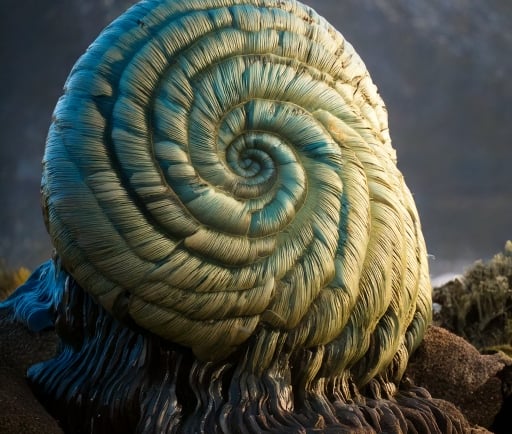The Giant Prototaxites: The Lost Kingdom of Ancient Lifeforms


Introduction to Prototaxites
In the annals of paleobotany, few organisms have sparked the imagination like Prototaxites. Often referred to as giant mushrooms or trees, these towering lifeforms dominated the Earth’s landscape during the late Silurian to early Devonian periods, approximately 420 to 350 million years ago. Their majestic structures, reaching heights of over eight meters, are remnants of an ancient kingdom that introduces a unique perspective on Earth’s evolutionary narrative.
A Glimpse Into the Ancient Ecosystem
The existence of Prototaxites challenges conventional definitions of plants and fungi, as they embody characteristics of both. Primarily, they are understood to have been a form of ancient fungus or a lichen-like organism, exhibiting traits that provided them with the ability to thrive in diverse environments. The towering trunks and thick, fibrous structures of these lifeforms suggest they played a substantial role in the ecosystem of their time, potentially serving as food sources for various herbivorous creatures.
The Significance of Prototaxites in Evolutionary History
What makes Prototaxites particularly fascinating is their potential influence on the atmosphere and soil composition of prehistoric Earth. By interacting with primordial atmospheres, they likely contributed to the transformation of the planet's environment, establishing conditions that allowed for greater biodiversity. The existence of such giant organisms signifies a pivotal evolutionary stage, marking the transition towards more complex terrestrial ecosystems.
In studying Prototaxites, scientists have endeavored to piece together how these organisms coexisted with early vascular plants and primitive land life. Their towering presence stands as a reminder of the vastness of life that once thrived in a world very different from our own. Fossils and preserved specimens serve as cryptic messages from a time long lost, urging modern researchers to seek a deeper understanding of Earth’s ancient lifeforms.
Conclusion: Rediscovering a Lost Kingdom
Today, as scientists unravel the mysteries surrounding the Prototaxites, we gain not only insight into a lost kingdom of life but also an appreciation for the complexity of ancient ecosystems. The study of these giant lifeforms illuminates the past in ways that can inform our understanding of present-day ecological dynamics. As we delve deeper into their legacy, Prototaxites remind us that nature’s history is rich and varied, one that continues to captivate the minds of those intrigued by the wonders of life on Earth.
